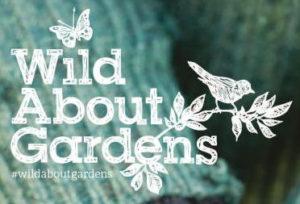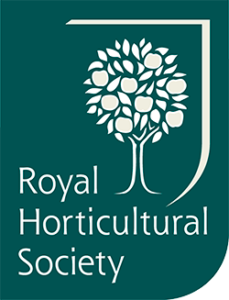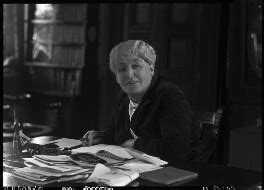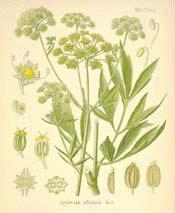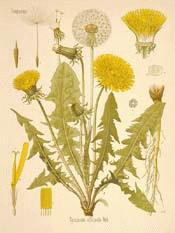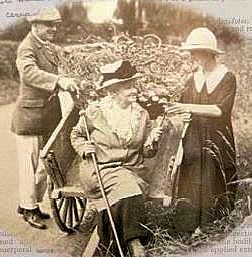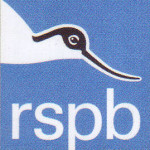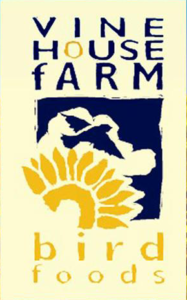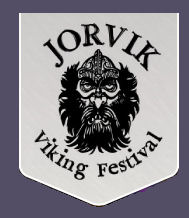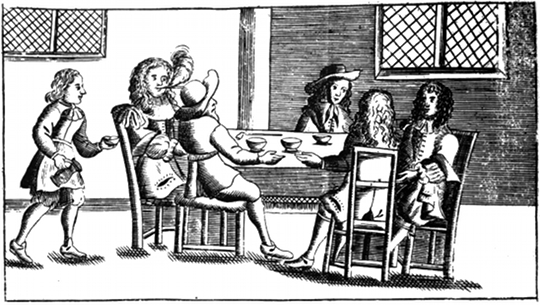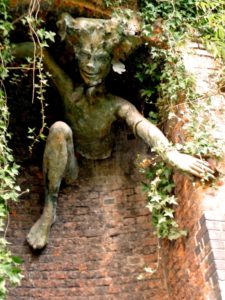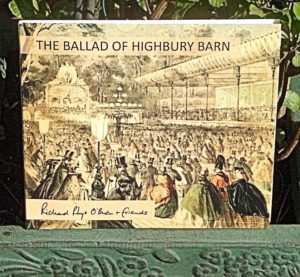THE POLLINATOR GARDEN
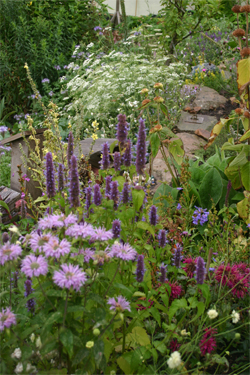
Marc Carlton’s 2010 cottage garden pollinator border, designed to attract wild bees & hoverflies.
This website by naturalist & gardener Marc Carlton is based on careful observation of plants & pollinators in the gardens he created in S London & Chepstow near the Bristol Channel.
* How insects feed from flowers
* A planting list for pollinators
* The basics of nature-friendly gardening
* Garden meadows
* Recommended reading lists
* Links to helpful sites
* Dutch & German nature gardens, & a N American page for readers in the USA/Canada
“The UK is nothing more than a peninsula of Europe, and has only been separated for some 8,000 years… Our flora is a shared subset of that of western Europe, as is our insect fauna. I choose western Europe as the main region of origin of plants for my pollinator border.”
“My second principle is to concentrate on flower forms which are close to nature, so no double flowers, complex hybrids or horticultural novelties.”
“I also include a wide variety of flower shapes and sizes, to help cater for the diversity of insect mouthparts and specialisations evolved to tackle different forms of flower.”
Marc advises: Choose a sunny site; Create shelter from prevailing cold wind; Group flowers of the same kind in large drifts; Plan for a succession of flowers through the growing season; Minimise or avoid the use of pesticides. Marc can be reached via the Contact page of the website. http://www.foxleas.com/ .
Follow him on Twitter: @foxleas_marc
Some website content is available as pdfs, but only for personal, non-commercial use.
WILD ABOUT GARDENS
This is a joint initiative between The Royal Horticultural Society (www.rhs.org.uk/) & The WildlifeTrusts (www.wildlifetrusts.org/). It offers information, project ideas and a monthly newsletter aimed at helping us attract more wildlife to our gardens. It has profiles on more than 200 birds, mammals, reptiles and plants.
During the year supporting beetles, Wild About Gardens supplied help in building a beetle bucket, beetle bank or dead hedge in your garden to help bring back the beetles. This year is all about Swifts, Swallows and Martins. wildaboutgardens.org.uk/
BEALTAINE COTTAGE
Colette O’Neill, writer & environmentalist, has reclaimed over 3 acres of land in the west of Ireland & made it into a wildlife sanctuary. In over 500ad-free youtube video blogs she talks of how she did it, taking us through the restored cottage & grounds with a camera or handheld phone, downloading via a hotspot. Jack the Border Collie was her companion for many of these. Wonderful walks with Colette & Jack.
This is a therapeutic site, positive & hopeful. We may be watching a video, but feel we are visiting a friend. Colette chats about the chop & drop technique, today’s weather, the Celtic calendar, renovating the cottage. You get a real sense of the person behind the website – warm, passionate & outspoken, a force for good.
She has inspired so many. She may persuade you to think differently about gardening & Mother Earth.
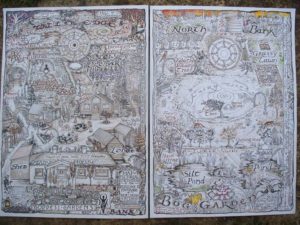 Bealtaine Cottage publications – books, calendars, bumper stickers & a double-sided map on card (right, by Irish artist David Gascoigne) are printed in Ireland – rather than by, say, corporate giant Amazon. Colette addresses & stamps all orders & mails them from the local post office. Her first book, A Cottage and Three Acres, takes the reader
Bealtaine Cottage publications – books, calendars, bumper stickers & a double-sided map on card (right, by Irish artist David Gascoigne) are printed in Ireland – rather than by, say, corporate giant Amazon. Colette addresses & stamps all orders & mails them from the local post office. Her first book, A Cottage and Three Acres, takes the reader
‘…from a desolate cottage set in 3 acres of monoculture sadness to a vibrant, thriving food forest of life… Bealtaine Books and Maps are printed in Ireland and posted from Ireland to support the people of Ireland.’
Here are a few vids to get you started. Please share.
Dog Friendly Ireland Day Featuring Jack Part 2 https://www.youtube.com/watch?v=bxzvqYgEq3I
DANU’S IRISH HERB GARDEN
Terri Conroy‘s garden in Connemara in the west of Ireland is named for Danu, the Irish Mother Goddess. The website is all about sharing a love & knowledge of plants, using them sustainably &, as far as possible, treading gently on Mother Earth. Traditional Irish customs & festivals are important – making a St Bridgid’s cross, Mullein Solstice candles.
The videos are positive & full of life. Terri herself is warm & welcoming. It is like visiting a good friend, one with much herbal knowledge. Animals are a part of each video. Dogs, cats & chickens around the cottage, horses in the neighbouring field.
There is a sense of place, gardening on the wild, windswept coast of Co. Galway. We watch as Terri works to reclaim the land. She grows & harvests plants, saving seed – using ‘weeds’ for medicinal remedies & general body care. Teas, tinctures, soaps & salves are made in the cottage kitchen.
SARAH RAVEN
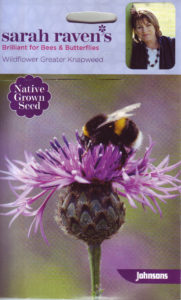 Gardener, botanist and writer Sarah Raven, known for her work at Sissinghurst and appearances on BBC2’s Gardener’s World, is based at Perch Hill Farm, Sussex, where she has her cutting garden.
Gardener, botanist and writer Sarah Raven, known for her work at Sissinghurst and appearances on BBC2’s Gardener’s World, is based at Perch Hill Farm, Sussex, where she has her cutting garden.
Sarah is on youtube. Go to Sarah Raven on youtube at Duck Duck Go for a choice of videos from Perch Farm : the Trial Beds, the Oast Garden, the Veg Garden & the Rose Garden… Gardening at Home, Why Sarah loves certain flowers, How to Sow/Plant, Growing Tea and Making Tisanes, Christmas, Making Easy Summer Basil Ice cream, & many more.
Sarah’s BBC2 series from 2012, Bees, Butterflies and Blooms, was her attempt at halting the decline in the country’s pollinators.
Visit Sarah’s website to order books, plants and seeds, sign up for a course or arrange to receive her newsletter.
WIKIPEDIA entry : https://en.wikipedia.org/wiki/Sarah_Raven
THE MIDDLE-SIZED GARDEN
Every Saturday Alexandra Campbell uploads this website & blog ‘with ideas, tips and inspiration so you can enjoy your garden more.’ Her own garden in Faversham, Kent, may be larger than many of our urban plots, but her website is always worth a look. She visits other gardens & interviews other gardeners, seeking their hints and tips.
Alexandra is an author & journalist. The Middle-Sized Garden Guide to Garden Privacy, one of her many books, is available on Kindle & on Amazon. The Middle-Sized Garden youtube channel has 56.8K subscribers as of February 2021. https: //www.themiddlesizedgarden.co.uk/about-the-middle-sized-garden-blog/alexandra-campbell-books/
This wildlife-friendly garden, the Abbey Physic Community Garden in Faversham, was part of Faversham Abbey before King Henry VIII abolished the monasteries. The garden occupies half an acre in the middle of town and backs onto one of Britain’s most ancient medieval streets.
PLANT-LORE
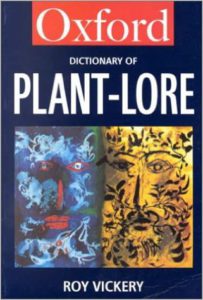 This archive tells us about plants through traditional tales, legends, local plant names, sayings, riddles & herbal remedies. The Compiler is author & lecturer Roy Vickery, a Natural History Museum botanist born in rural Dorset, now living in South London.
This archive tells us about plants through traditional tales, legends, local plant names, sayings, riddles & herbal remedies. The Compiler is author & lecturer Roy Vickery, a Natural History Museum botanist born in rural Dorset, now living in South London.
The Compiler is available for walks and talks. “Roy is an experienced lecturer on plant folklore, and is also available to lead walks on the uses and folklore of plants – you provide the weed patch or the hedgerow, he will do the rest. As such events are considered to be important opportunities for collecting new material they are usually given free of charge in the Greater London area, and with only a charge to cover transport elsewhere.”
 Roy is occasionally available to do one-to-one walks or walks for small groups, in the London area, in exchange for a donation to the South London Botanical Institute. Note: The listed events are arranged by a variety of organizations many of whom might want to charge a fee, or take a collection in aid of their funds.
Roy is occasionally available to do one-to-one walks or walks for small groups, in the London area, in exchange for a donation to the South London Botanical Institute. Note: The listed events are arranged by a variety of organizations many of whom might want to charge a fee, or take a collection in aid of their funds.
For upcoming walks and talks: https://www.plant-lore.com/upcoming-events/
Roy welcomes information on plants from all parts of the British Isles, ethnic groups settled there, & comparative material from overseas, no matter how widespread and well-known you consider it to be. A copy of all material received will eventually be in the care of the Library of The Natural History Museum. See website for details.
PLANT-LORE . Collecting the folklore and uses of plants . www.plant–lore.com/
VICKERY’S FOLK FLORA An A-Z of the Folklore and Uses of British and Irish Plants, London: Weidenfeld & Nicolson, 2019. A greatly expanded version of the 1995 Dictionary of Plant-lore, with illustrations, increased information on local names, & an attempt to try and record when and where beliefs & practices occurred.
Vickery’s Folk Flora was short-listed for the 2019 Katharine Briggs Folklore Award.
Roy Vickery, 9 Terrapin Court, Terrapin Road, London SW17 8QW.
Maud Grieve, A Modern Herbal, 1931 Botanical.com
Maud Grieve’s book, A Modern Herbal, published in 1931, has been downloaded in an A to Z format for the internet. Today we can access Maud’s prodigious research and knowledge in spite of not owning a copy of her famous herbal in book form.
It may be a modern herbal of its time, but Maud is always keen to see what Culpeper or Gerard or Dioscorides have to say on a plant.
1858 – 1941 Maud Grieve was born not far from Highbury at No. 75 Upper Street, Islington. She lived there until age 6 when her father died and she was sent to live with relatives in Beckenham. Read her biography in WIKIPEDIA.
At the time of the First World War Maud & her husband William Grieve lived in Chalfont st Peter, Bucks. with an extensive perennial nursery on the grounds of their home. Disruption of trade routes during the war found Britain in need of drug supplies, most of which were then being imported from continental Europe. The drugs required were henbane, foxglove, deadly nightshade & monkshood. Maud turned the nursery into a Medicinal Herb Farm & Training School to meet the need.
“Maud Grieve was a Fellow of the Royal Horticultural Society with an encyclopedic knowledge of medicinal plants. The training school gave tuition and practical courses in all branches of herb growing, collecting, drying and marketing.”
MAUD GRIEVE ‘Now First Let Me Tell You About That Wonderful Plant’, Buckinghamshire Gardens Trust, ISBN 978-1-911133-21-6
Self-published by Claire de Carle for International Women’s Day 2021 To order your copy email the author: claire@decarle.plus.com £12.00 including postage and packing
OUTOFMYSHED
blackstock triangle gardeners community gardening
In 2009 gardener, writer & photographer Naomi Schillinger helped set up a community gardening scheme at the other end of our North London street, involving over 100 households. The front gardens, window boxes & flower-filled tree pits of these community gardeners have been an inspiration for the rest of us.
On this website Naomi keeps details of the scheme & great photos of the gardeners celebrating what they have grown on ‘Cake Sunday’ get-togethers over the last decade. She lists other recommended websites on her gardening blog, & looks at gardens further afield that are worth a visit.
THE BUMBLEBEE CONSERVATION TRUST

The BBCT is a small independent charity that works to help native Bumblebees, who are in decline. Creative fundraising ideas from its membership help the Trust raise public awareness, evolving plans to help Bumblebees. To read more about The BBCT, go to our drop-down menu for the What You Can Do – For Bees page. See their website for details about their work, how to become a member or sign up for their free e-newsletter.
Bumblebee Conservation Trust, Beta Centre, Stirling University Innovation Park, FK9 4NF
THE BUMBLEBEE PROFESSOR
Dave Goulson, scientist, author & founder of The Bumblebee Trust, has downloaded a number of videos. Gardeners will enjoy seeing ‘The Bumblebee Professor’ in his own UK garden (various bee-frendly hotels & a personable turkey) & his wildflower meadow in France.
Dave Goulson‘s books include A Sting in the Tale, A Buzz in the Meadow, Silent Earth, The Garden Jungle & Gardening for Bumblebees. You can find Dave‘s recommended bee-friendly flowers on his website The best garden flowers for bees : Resources : Goulson Lab
http://www.sussex.ac.uk/lifesci/goulsonlab/resources/flowers
WIKIPEDIA entry: https://en.wikipedia.org/wiki/Dave_Goulson
BUGLIFE
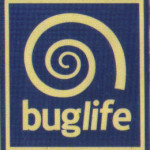 Saving the small things that run the planet
Saving the small things that run the planet
The Invertebrate Trust
Buglife is a small charity that campaigns to protect bugs and the environment. It involves people in conservation action, learning about and enjoying bugs. Its website includes an e-newsletter, a UK bug map, events, activities, info for schools and young insect lovers, & a bug identifier (What’s that bug?)
No Insectinction is a short youtube video listing 5 things you can do to reverse insect decline. It is Buglife’s prescription for healing our planet… To watch it go to their website:
BRITISH BUGS
This is an online identification guide to True Bugs, of which there are nearly 2,000 species in the UK. The website has a gallery of bugs & information on recording, identifying & going further in bug investigation. Illustrations of UK Shieldbugs & their instars by Ashley Wood accompany the guide.
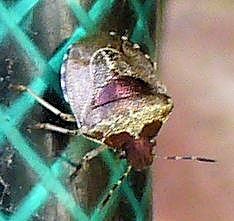
Woundwort Shieldbug on our garden hose, identified from Ashley Wood’s illustrations & the high definition photos of the guide.
www.britishbugs.org.uk/heteroptera/idcards/life_stages.html
BUTTERFLY CONSERVATION
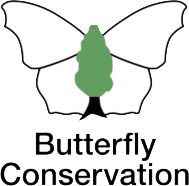 This UK-based charity works to save native butterflies & moths from extinction. Through surveys, monitoring & research it promotes gardening that is moth & butterfly-friendly, with advice on conserving & restoring natural habitats vital to butterfly & moth life-cycles.
This UK-based charity works to save native butterflies & moths from extinction. Through surveys, monitoring & research it promotes gardening that is moth & butterfly-friendly, with advice on conserving & restoring natural habitats vital to butterfly & moth life-cycles.
The free monthly newsletter All-Aflutter has the latest butterfly & moth news, species to look out for, gardening tips & special offers. Photo galleries & A-Z listings on their website can help you identify butterflies & moths :
http://butterfly-conservation.org/
Butterfly Conservation, Manor Yard, East Lulworth, Wareham, Dorset EH20 5QP.
PLUME MOTHS
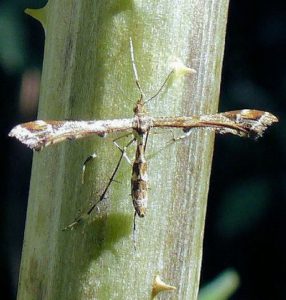
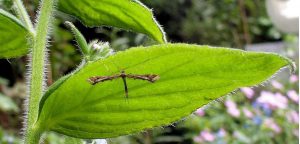 These tiny T-shaped moths have been plentiful in our garden. They have multiple wings that fold in under each other when at rest, & they fly in a quirky way – describing corkscrews or zigzags in the air before landing on the underside of a leaf. We have had the occasional Plume Moth whose wings look like swirly sand sculptures, & there have been a few white Plume Moths… But our most seen species is Amblyptilia acanthadactyla, with wings & thorax covered with a stencil design. Wikipedia says it is also seen in Iran and Georgia.
These tiny T-shaped moths have been plentiful in our garden. They have multiple wings that fold in under each other when at rest, & they fly in a quirky way – describing corkscrews or zigzags in the air before landing on the underside of a leaf. We have had the occasional Plume Moth whose wings look like swirly sand sculptures, & there have been a few white Plume Moths… But our most seen species is Amblyptilia acanthadactyla, with wings & thorax covered with a stencil design. Wikipedia says it is also seen in Iran and Georgia.
www.gardensafari.net/english/weird-winged_moths.htm
THE BRITISH TRUST FOR ORNITHOLOGY (BTO)
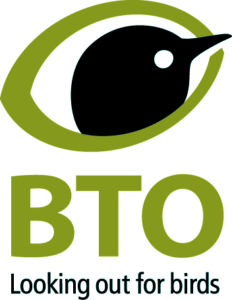 This independent charity does research into biodiversity, especially where it concerns birds. Its members, with over 40,000 volunteers & partner organisations, work with scientists to record details of everything from badgers to butterflies, but this is a ‘birds-first’ organisation. BTO publishes journals, including BTO News for members and Bird Table for participants in their Garden Birdwatch Project, in which volunteers keep a weekly record of how many birds they see in their garden.
This independent charity does research into biodiversity, especially where it concerns birds. Its members, with over 40,000 volunteers & partner organisations, work with scientists to record details of everything from badgers to butterflies, but this is a ‘birds-first’ organisation. BTO publishes journals, including BTO News for members and Bird Table for participants in their Garden Birdwatch Project, in which volunteers keep a weekly record of how many birds they see in their garden.
BTO free resources projects include The Birdbox Project, which works with teachers to link live footage from video cameras in birdboxes around the UK and Europe. You do not need to register to watch the videos, but if you want to put out a live video from a birdbox in your school, this webpage will help you organise & set it up:
For birdhouse building, siting & cleaning, & how to deter predators, go to
http://www.bto.org/nnbw/info_pack.htm
THE ROYAL SOCIETY FOR THE PROTECTION OF BIRDS
The RSPB is a major UK charitable organisation working to improve the welfare of birds in this country & abroad.
Some familiar British birds are migrants who spend part of each year in other countries. Hunting & changes to the climate & their living places abroad have left many birds facing danger & death once they leave the UK. The RSPB campaigns with partner organisations abroad to improve the welfare of all birds.
For more on the RSPB, see the What You Can Do – For Birds page on the menu.
Go to rspb.org.uk
RSPB, The Lodge, Potton Road, Sandy, Bedfordshire SG19 2DL
THE GARDEN BIRD & WILDLIFE COMPANY
Founded in 1994 in the country town of Wem, Shropshire, this specialist supplier of wild bird-related products delivers birdfood, birdhouses, feeders & other accessories to your door. These items are included in their free feeding guide, along with season-related articles on birds, competitions & more.
Orders can be placed online from The Garden Bird website :
Garden Bird & Wildlife Co, Unit 9 Enterprise Court, Lancashire Enterprise Business Park, Leyland, PR26 6TZ
THE WILDLIFE TRUSTS
![]() There are 47 individual Wildlife Trusts in England, Wales, Scotland & Northern Ireland. Their goal is to help nature recover from years of decline, “to inspire people about the natural world so that they value it, understand their relationship with it and take action to protect and restore it.”
There are 47 individual Wildlife Trusts in England, Wales, Scotland & Northern Ireland. Their goal is to help nature recover from years of decline, “to inspire people about the natural world so that they value it, understand their relationship with it and take action to protect and restore it.”
A link on their website lets you ‘Raise money for your Wildlife Trust – buy your birdfood from Vine House Farm.’ Every sale of birdfood, bird houses, feeders & accessories from wildlife-friendly Vine House Farm in Lincolnshire supports the Wildlife Trusts. Delivery is free, & the Trusts receive an additional £5 from your first purchase.
http://www.vinehousefarm.co.uk/
FRIENDS OF THE EARTH
FOE work with local groups, experts, business leaders, politicians – campaigning to protect the world we live in. Those taking part in FOE‘s Great British Bee Count for 2017 spotted 320,337 bees around the UK.
—————————————————————————————————————————————————–
Friends of the Earth Great British Bee Count will not be taking place this year.. See the website for more information.
https://friendsoftheearth.uk/bee-count
https://en.wikipedia.org/wiki/Friends_of_the_Earth
THE OPEN UNIVERSITY – ISPOT
The Open University is the largest academic institution in the UK & a world leader in flexible distance learning. Its website, aimed at identifying anything in nature, is called iSpot. It encourages learning via social networking.
ISPOT is free to join. Share wildlife photos from your camera or phonecam along with the location where you took them & contribute to the picture of nature across the UK. If you use a digital camera, your photo’s date will automatically be recorded along with other photo data.
http://www.ispotnature.org/communities/uk-and-ireland
Because of our neighbourhood’s likely Viking connections (See Vikings at the Bottom of our Gardens page) we follow events in the North of England, where this Centre was built in York on the site of a 1,000 year-old Viking town.
Each year at February Half Term Jorvik & the York Archaelogical Trust host Jolablot, the ancient Viking festival held ‘to herald the coming of spring and the survival of winter hardships’. Over 40,000 visitors come to this, the largest Viking Festival in Europe, attracted by its atmosphere & family-friendly events. Volunteers come to York from all over the globe to take part in combat reenactment.
WWW.JORVIKVIKINGCENTRE.CO.UK.
The Battle of Carham . 2018 . lighthouse movie show / Combat reenactment sample
————————————————————————————————————————————————————-
—————————————————————————————————————————————————————
VIKING FESTIVAL VIDEOS
Jolablot 2016 with The Vagabrothers
As part of their road trip across the north of England, the brothers assume their roles as market traders, interview King Canute & the Saxon King on battle plans, & enjoy the beer, the beards & the combat reenactment.
YORK VIKING FESTIVAL!!! | ENGLAND TRAVEL VLOG #3 – youtube ~ https://www.youtube.com/watch?v=6jdKKtnZ0W0
————————————————————————————————————————————————————-
Jolablot 2018
Events included Have-a-Go Archery & Sword Combat, Viking Age Crafting, & Little Diggers with Ivar the Boneless & his Viking Army. Brew York launched Ragnar’s Revenge – a beer based on Sahti, a historic Finnish ale brewed with traditional ingredients including juniper, fennel & rosemary. The Watlington Hoard of Viking era silver, saved for the nation by the Ashmolean Museum, was brought to York for the festival & remained at Jorvik until 21st May.
Jorvik Festival 2018: March Down Stonegate – YouTube ~ https://www.youtube.com/watch?v=biUhi70TH18
https://www.ashmolean.org/
———————————————————————————————————————————————————-
THE FRIENDS OF GILLESPIE PARK
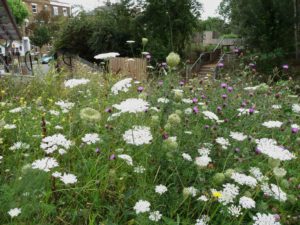 This is a group of volunteers dedicated to protecting & enhancing Gillespie Park, a natural wildllife park & Local Nature Reserve in Islington, North London. They were involved in saving the reserve’s land from development, & work to maintain its special nature for the community. Visit their website to read more about them & possibly consider becoming a Friend yourself.
This is a group of volunteers dedicated to protecting & enhancing Gillespie Park, a natural wildllife park & Local Nature Reserve in Islington, North London. They were involved in saving the reserve’s land from development, & work to maintain its special nature for the community. Visit their website to read more about them & possibly consider becoming a Friend yourself.
http://www.friendsofgillespiepark.co.uk
THE PARKLAND WALK
The Parkland Walk is a Local Nature Reserve between Haringey & Islington in North London. Now a Site of Metropolitan Importance for Nature Conservation, it follows the course of a railway line which ran between Finsbury Park & Alexandra Palace. Since the line’s final closure in 1970, many trees & wildflowers have colonised the Parkland Walk, & wildlife is plentiful here. For more, see our Worth A Visit tab on the drop-down menu.
For Wikipedia‘s extensive entry for this Nature Reserve, go here.
Other websites : Londonist‘s text & pictures include the highs & the lows of this, London’s longest nature reserve. The Friends of the Parkland Walk site shows how many people care about the reserve & what is involved in keeping it up.
http://londonist.com/2015/06/weekend-walk-haringeys-parkland-walk
https://www.parkland-walk.org.uk/about-the-friends
This family-friendly Islington charity offers the chance to experience a working farm in the heart of London. At the animal village, where rabbits, chickens & a goat live in painted Wendy houses, children have the opportunity to not only stroke the animals but feed & groom many of them too. The farm has a range of rare animals & many fun things to see and do. School visits are welcomed.
We are pleased to be able to return to open access visiting.
Monday 10.30am-3.30pm Tuesday CLOSED Wednesday, Thursday & Friday 10.30am-3.30pm Saturday & Sunday 11am-3pm
The farm is a working space with animals & visitors are asked to follow health and safety guidance at all times. Additional requirements to limit the transmission of Covid-19 are also in place.
Guidance on visiting the farm during the covid-19 pandemic
Please do not visit if you or anyone in your household is unwell or is self-isolating. At the moment the farm is operating in a very different manner to what we have in the past, in order to reduce the transmission of Covid-19 & cope with the loss of income over this period. We are opening after some morning animal care; parts of the farm now have a one way system. Some spaces are closed to visitors to allow staff, volunteers & young farmers to carry out farm work & developments. We are asking visitors to keep 2m social-distancing from others not in their party including staff & volunteers. We have additional guidance for visitors alongside the regular farm safety advice to ensure everyone’s safety.
Nicola Baird interviewed some of those working at the farm for her Islington Faces Blog, which includes photos:
www.islingtonfacesblog.com/2012/10/31/freightliners-farm-country-life-in-the-city/
You can volunteer or sponsor an animal. To find out what’s happening on the farm now, visit our website for details:
Whats on — Freightliners City Farm
Freightliners Farm, Sheringham Road, Islington, North London, Greater London N7 8PF
